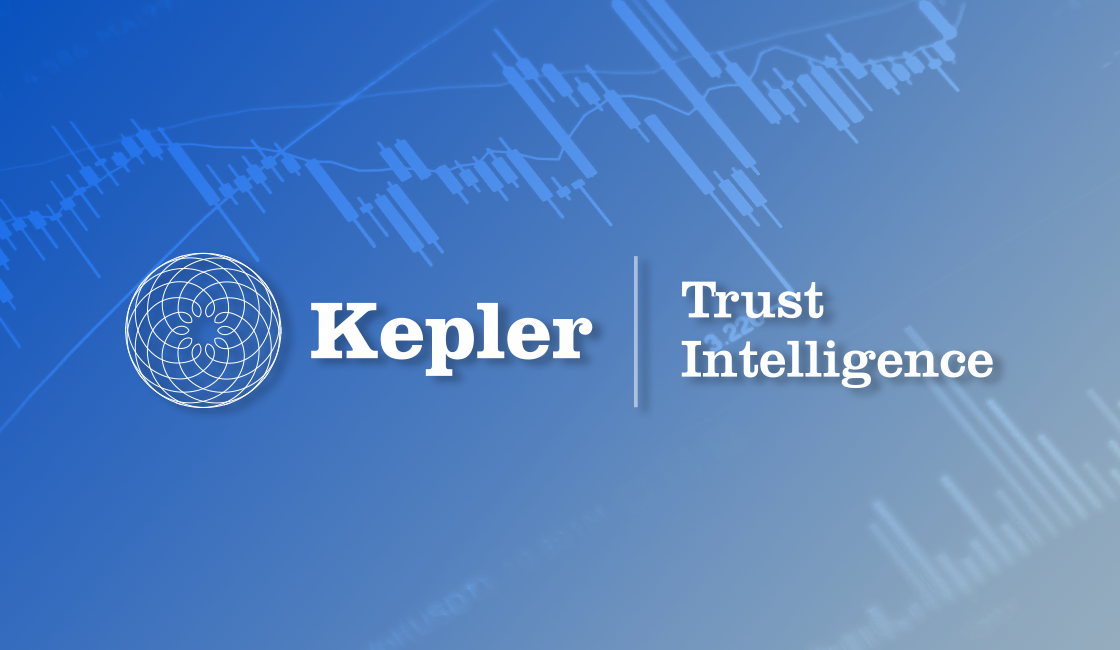Index
Macro Update
by Dean Orrico, President & CEO and Robert Lauzon, Managing Director & CIO
November was a standout month for equity markets, delivering the strongest monthly performance of 2024. The S&P 500, TSX Composite and Dow Jones Industrial Average generated total returns of 5.9%, 6.4% and 7.7% respectively, which resulted in all three indices closing the month at all-time highs. Small-cap stocks also saw significant gains, driven by optimism around potential tax cuts, with the Russell 2000 soaring over 10%—its best monthly performance this year. We expect markets to continue their upward trajectory into year-end. Historically, the S&P 500 has generated a positive return 74% of the time in December with an average gain of 1.48%. It is even more consistent in Canada where December has been positive 80% of the time with an average gain of 1.49%.
Seasonal tailwinds generally start to taper in mid-January which is when we expect outsized gains to become more difficult to achieve. While the incoming Trump Administration provides reasons for optimism, including deregulation, tax relief, and a more favourable M&A environment, we are cognizant of the fact that the S&P 500 Index is up 70% since October 2022 and valuations are elevated. With the Index trading at over 22x forward earnings, there is little room for multiple expansion in 2025. As a result, earnings growth will play an important role in sustaining the market’s upward trajectory. Consensus estimates currently project the S&P 500 to generate 14% earnings growth in 2025, followed by another 13% of growth in 2026. We think this rate of growth is achievable if tariffs, fiscal deficits and recent cabinet picks aren’t overly disruptive. Although valuations are expensive, we believe current multiples can be sustained and double-digit returns are achievable next year given the positive outlook for corporate earnings and the U.S. economy.

Trump’s surprise announcement of a 25% tariff against Canada and Mexico did little to shake investor confidence. We continue to believe that Trump’s tariff threats are primarily a negotiation tactic, but they should not be taken lightly. We were encouraged to see a “productive wide-ranging discussion” take place between Trump and Trudeau just days after the announcement where the leaders discussed issues such as unauthorized migration and fentanyl trafficking. Canadian Public Safety Minister Dominic LeBlanc then outlined potential measures, including drones, helicopters, and additional staffing that should help quell Trump’s concerns. The United States and Canada are each other’s largest trading partners with nearly $3.6 billion in goods and services crossing the border daily. Tariffs on Canadian energy imports would have a particularly detrimental effect on the U.S. economy and are contradictory to Trump’s pro-energy initiatives. Given the inflationary impacts of tariffs, we view the probability of these taking effect in early 2025 as low. That said, uncertainty regarding North American trade policy is likely to persist leading up to the six-year review of the USMCA in July 2026.
The latest CPI report highlights that inflation remains elevated above the Fed’s 2% target, with headline and core CPI rising 2.6% and 3.3% y/y in October. While goods prices continue to deflate, supercore inflation, rent inflation, and wage growth are proving sticky at higher levels, supported by robust economic growth. This stickiness, combined with rising bond yields, suggests the Fed may have to curb the pace of future rate cuts. That said, a second wave of inflation appears unlikely, as improving productivity is boosting real GDP while keeping unit labor cost inflation in check. As we have previously written, 10-year bond yields of approximately 4% are not overly restrictive and are supportive of healthy economic activity.
Real Estate
Middlefield Fund Tickers & Codes: MREL / MID 600 / RS / RS.PR.A
by Dean Orrico, President & CEO
The real estate sector lagged the broader market in November, increasing by 1% while our dedicated real estate mandates were up by 2.3%. The primary headwinds impacting real estate include continued concerns surrounding reduced Canadian immigration targets as well as an increase in longer dated government bond yields in the U.S. and Canada. We believe the immigration reduction issue has been overly discounted, especially given the significant number of immigrants who entered Canada over the past five years and the corresponding surge in demand for housing and retail activity. We also believe there is a path for a reduction in bond yields due to the Trump Administration’s strategy to cut expenses and drive greater efficiency from government spending. If successful, we believe yields could move lower over the coming months.
Q3 2024 earnings results generally exceeded expectations across the Canadian real estate sector. Leasing spreads for Industrial (+34%) and Retail (+9%) were notably strong, supporting continued growth in same-property NOI. Several of our core REIT holdings also reported dividend increases ranging from 3% to 5%, reflecting stable growth in free cash flow.
SmartCentres REIT (SRU) was a standout performer this quarter with a 55 basis point increase to portfolio occupancy and an upward revision to its 2025 growth outlook. While SRU doesn’t disclose specific rental rate uplifts on new leasing, the acceleration in its average in-place rent per square foot points to robust leasing activity. Specifically, we believe SRU’s improved outlook is being driven by Toronto Premium Outlets – a top three performing shopping centre in Canada where tenants generate over $1,500/sf in sales. This trend aligns with a broader narrative in the Canadian retail market, where reduced per capita retail space (down 6% since 2018) has supported retail valuations and driven leasing spreads above 20% in many cases. SRU received upward revisions to NAV estimates and price target increases on the back of its better-than-expected Q3 results.
RioCan (REI), another core Retail REIT holding, reported Q3 results that exceeded expectations. Operating performance was highlighted by strong tenant retention (92%), a continued uptrend in leasing spreads (+14.2%), and all-time high committed occupancy of 98.6%. RioCan is also positioned to unlock significant value through the monetization of its existing condo projects and its residential portfolio/platform. We recently met with REI’s management and they remain extremely confident that condominium closings will occur as expected with the proceeds used for deleveraging, opportunistic stock buybacks, and high-potential acquisitions. REI’s residential platform has recently been a source of concern and cause for relative underperformance, which we believe is unjustified considering its peer-leading operational metrics.
SRU and REI’s strong Q3 results reflect healthy operating fundamentals in the Canadian retail sector. Retail REITs currently represent the second largest sub-industry weighting in our real estate Funds’ portfolio mix at ~22%. With the group generating near-record blended lease spreads and occupancy levels, we maintain a constructive stance on the sector heading into 2025.
Healthcare
Middlefield Fund Tickers & Codes: MHCD / MID 625 / SIH.UN
by Robert Moffat, Portfolio Manager
Healthcare lagged the S&P 500 for a third consecutive month in November. The sector has underperformed as investors weigh the potential impacts of a shifting regulatory environment under the Trump Administration. Specifically, the recent appointment of Robert Kennedy Jr. (RFK) as the secretary of HHS has impacted sentiment. Healthcare is now trading at a 4.5x multiple discount to the S&P 500 as markets price in a worst-case scenario under new leadership.
We believe RFK’s impact has been overpriced, creating a rare opportunity to own high-quality healthcare companies at attractive valuations. RFK has been outspoken with his views towards the pharma industry, with a particular emphasis on vaccines. Ultimately, we believe the impact that RFK could have on fundamentals is limited; however, it is difficult to call when sentiment in the pharma sector will improve. Our healthcare funds were underweight the pharma sector leading up to the election and we have since reduced our exposure to select names with significant vaccine businesses. On the other hand, we maintain our high conviction in the makers of GLP-1 drugs, including Eli Lilly and Novo Nordisk, and have been opportunistically adding to these names on the recent pullback. We remain overweight the MedTech industry due to its insulation from political scrutiny and its robust earnings growth outlook.
There are an abundance of opportunities for innovation and growth in the healthcare sector today. Natera, a leader in molecular diagnostics, is one of our favourite growth companies and continues to fire on all cylinders. The company posted a ~20% topline beat in Q3, following similar impressive outperformance in Q2 (~20%) and Q1 (~15%). The company raised its full-year guidance substantially, reflecting broad-based strength across all lines of business. Signatera, a personalized blood test that detects cancer in the body by looking for small fragments of DNA, was the biggest driver of performance with an additional 11.4k tests performed over the previous quarter. Natera is also a leader in Women’s Health where the company achieved notable price increases for its non-invasive prenatal tests. Natera has proven itself as an industry leader with consistent innovation and speed in bringing new products to market. The stock has risen 170% year-to-date and has been the second biggest contributor to performance in our healthcare funds this year.

Infrastructure
Middlefield Fund Tickers & Codes: MINF / MID 265 / MID 510 / ENS / IS / IS.PR.A
by Robert Lauzon, Managing Director & CIO
The AI revolution is driving unprecedented demand for energy to support data processing and storage, with hyperscalers and data centers requiring reliable and scalable power. Our Infrastructure Dividend Split Corp (IS) holds exposure to Canadian companies across the energy supply chain that are uniquely positioned to capitalize on this trend.
Natural gas producers such as Tourmaline and ARC Resources stand to benefit from surging demand for low-cost, reliable energy. Natural gas is a critical input for power generation, offering the scalability and consistency required to meet the energy needs of AI-driven facilities. Producers can leverage Canada’s abundant natural gas reserves to supply both domestic and export markets. Midstream operators such as Enbridge and TC Energy are essential for transporting natural gas from production sites to end-users. Their expansive pipeline networks enable cost-effective and secure delivery across North America, connecting Canadian resources to key U.S. markets and export terminals. Recent growth targets announced by both companies highlight their robust business models, strategic deleveraging efforts, and commitment to increasing shareholder returns.
Utility companies such as Capital Power and TransAlta can supply the reliable power demanded by hyperscalers and data centers. These firms are expanding their portfolios with natural gas-fired turbines and storage solutions to ensure grid stability, complemented by renewable energy assets such as wind and solar. TransAlta’s commitment to a diverse energy mix aligns with the power requirements of Big Tech companies, while Capital Power’s strategic reinvestments drive long-term growth. Together, Canadian energy companies offer a vertically integrated solution for powering the AI revolution, reinforcing Canada’s role as a global energy leader while meeting the demand of innovation-driven industries.

Technology & Communications
Middlefield Fund Tickers & Codes: MINN / SIH.UN / MID 925 / MDIV
by Shane Obata, Portfolio Manager
2025 is poised to be a pivotal year for the AI revolution. This view is driven by real-world applications and fueled by increasing adoption of AI-powered solutions across various sectors. For investors, this translates to a fundamental shift in the technology landscape, with software companies uniquely positioned to capitalize on this trend.
Beyond automation, the rise of AI agents is a significant trend transforming the enterprise landscape. AI agents are digital assistants designed to automate tasks and make decisions using artificial intelligence. They can understand natural language, learn from experience, and interact with various systems and humans. These agents can automate workflows, streamline operations, and improve collaboration. ServiceNow’s AI agents are a prime example, designed to perform complex tasks and be orchestrated across the enterprise. The company has also developed an AI agent orchestrator that can manage multiple AI agents, both internal and external. This shift toward AI agents is changing the nature of work, enabling employees to be more productive and efficient. For investors, this signals a potential shift in how companies operate, with AI agents playing an increasingly important role in driving efficiency and productivity gains.
From an investing standpoint, it will be crucial to see positive earnings momentum and the continued emergence of return on AI CapEx. While the initial investment in AI can be substantial, companies that successfully leverage AI to drive business value are likely to see significant returns in the long run. This requires a focus not just on technology but also on strategic implementation and integration of AI into business operations. Companies that can effectively leverage AI to enhance their products, services, and operations are likely to be rewarded with strong financial performance and a competitive advantage in the market.
The potential for software to lead the AI revolution in 2025 is immense. As AI continues to evolve, software companies will play a crucial role in developing and deploying AI-powered solutions that transform industries and drive economic growth. For MINN investors, this presents a significant opportunity to capitalize on companies that are at the forefront of this technological revolution and are well-positioned to benefit from the increasing adoption of AI across various sectors.

Resources
Middlefield Fund Tickers & Codes: MID 800 / MID 161 / MID 265 / MRF FT LP / Discovery FT LP
by Dennis da Silva, Senior Portfolio Manager
The price of gold hit a temporary setback in November as anxiety around tariffs and government debt levels pushed the U.S. dollar and treasury yields higher. The post-election rotation out of gold has removed some of the froth from futures positioning and positioned gold for further upside in 2025. It should be noted that following Trump’s 2016 win, the price of gold corrected 12% in the first 45 days after the election before going on to gain 68% over the remainder of his term. We expect central banks (particularly emerging market) to continue accumulating record amounts of gold given its attractiveness as a financial asset that is global, liquid, anonymous, and comes without counterparty risk. The S&P/TSX Global Gold Index was down 5.6% in November, underperforming the 3.3% decline in gold.
Natural gas prices have rallied recently as global inventories have tightened and forecasts show winter weather approaching in the Northern Hemisphere. European inventories have dropped below the five-year average for the first time since 2022, causing European gas price benchmarks to hit year-to-date highs. Another positive data point for NYMEX and AECO natural gas pricing is that LNG Canada is undertaking commissioning activities ahead of the facility’s mid-2025 launch positioning Canada as a significant player in global LNG markets. In addition, the next U.S. LNG project (Plaquemines) looks to be on track for production as well. Assuming Plaquemines ramps up according to plan, U.S. LNG export supply would increase by 12% by mid-2025, adding further demand for North American gas molecules.
Enbridge released favourable 2025 guidance in support of its multi-year growth outlook. Updated 2025 EBITDA guidance of +9% includes the full-year impact of its recent U.S. gas utility acquisitions. In addition, the company reiterated its expectation of hitting the top end of its EBITDA guidance range for 2024. Enbridge also declared its 30th consecutive annual common share dividend increase, a 3% increase over 2024. With the US$19 billion of U.S. gas utility acquisitions now completed, the company expects to remain comfortably within its debt and payout ratio target ranges with no external equity required. We believe its diverse asset base will sustain high utilization rates on its existing systems, supported by growing energy demand in North America stemming from data centres, LNG and industrial demand.
Exchange Traded Funds (ETFs)
Mutual Funds (FE | F)
TSX-Listed Closed-End Funds
| Fund | Ticker | Strategy |
|---|---|---|
| MINT Income Fund | MID.UN | Equity Income |
| Sustainable Innovation & Health Dividend Fund | SIH.UN | Innovation & Healthcare |
TSX-Listed Split Share Corps. (Class A | Preferred)
| Fund | Ticker | Strategy |
|---|---|---|
| E-Split Corp. | ENS | ENS.PR.A | Energy Infrastructure |
| Real Estate Split Corp. | RS | RS.PR.A | Real Estate |
| Infrastructure Dividend Split Corp. | IS | IS.PR.A | Infrastructure |
LSE-Listed Investment Fund
| Fund | Ticker | Strategy |
|---|---|---|
| Middlefield Canadian Income Trust | MCT | Canadian Equity Income |
Commissions, trailing commissions, management fees and expenses all may be associated with mutual fund investments, including ETFs. Please read the prospectus before investing. You will usually pay brokerage fees to your dealer if you purchase or sell units/shares of investment funds on the Toronto Stock Exchange or other alternative Canadian trading system (an “Exchange”). If the units/shares are purchased or sold on an Exchange, investors may pay more than the current net asset value when buying and may receive less than the current net asset value when selling them. There are ongoing fees and expenses associated with owning units or shares of an investment fund. An investment fund must prepare disclosure documents that contain key information about the fund. You can find more detailed information about the fund in these documents. Mutual funds and investment funds are not guaranteed, their values change frequently and past performance may not be repeated. Certain statements in this disclosure are forward-looking. Forward-looking statements (“FLS”) are statements that are predictive in nature, depend upon or refer to future events or conditions, or that include words such as “may”, “will”, “should”, “could”, “expect”, “anticipate”, “intend”, “plan”, “believe”, or “estimate”, or other similar expressions. Statements that look forward in time or include anything other than historical information are subject to risks and uncertainties, and actual results, actions or events could differ materially from those set forth in the FLS. FLS are not guarantees of future performance and are by their nature based on numerous assumptions. Although the FLS contained herein are based upon what Middlefield Funds and the portfolio manager believe to be reasonable assumptions, neither Middlefield Funds nor the portfolio manager can assure that actual results will be consistent with these FLS. The reader is cautioned to consider the FLS carefully and not to place undue reliance on FLS. Unless required by applicable law, it is not undertaken, and specifically disclaimed that there is any intention or obligation to update or revise FLS, whether as a result of new information, future events or otherwise.
This material has been prepared for informational purposes only without regard to any particular user’s investment objectives or financial situation. This communication constitutes neither a recommendation to enter into a particular transaction nor a representation that any product described herein is suitable or appropriate for you. Investment decisions should be made with guidance from a qualified professional. The opinions contained in this report are solely those of Middlefield Limited (“ML”) and are subject to change without notice. ML makes every effort to ensure that the information has been derived from sources believed to reliable, but we cannot represent that they are complete or accurate. However, ML assumes no responsibility for any losses or damages, whether direct or indirect which arise from the use of this information. ML is under no obligation to update the information contained herein. This document is not to be construed as a solicitation, recommendation or offer to buy or sell any security, financial product or instrument.












